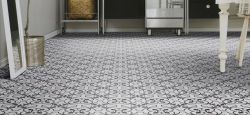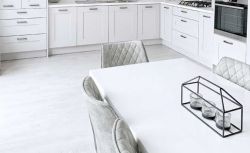Lacquered vs oiled floor: dining room
Your dining room is another area of the home that can get very busy, with daily meals, homework, working from home, and chores often occurring around the dining table.
Lacquered floors are best at coping with the impact of lots of feet passing through a space. However, oiled flooring finishes can help hide any marks from chair and scrapes, so it really depends on what you’re more concerned about.
We’d opt for lacquered floor to help keep your floor protected for longer. Scrape marks are inevitable in dining rooms with wooden floors, so you may as well aim to protect your floor with a rug and a lacquered finish.
Lacquered vs oiled floor: kitchen
As the heart of the home, kitchens are high-traffic spaces. Your kitchen flooring needs to be up to the challenge of daily footfall, as well as potential liquid spills and food stains. Choosing kitchen engineered wood flooring with a lacquered finish can offer more durability day-to-day, shielding your floors from liquid and dirt buildup with a stronger surface barrier than most oil finishes.
However, if you’re looking for even more protection for your flooring, luxury vinyl tile can deliver the appearance of real wood flooring with superior water resistance. Perfect for busy kitchens and utility spaces.
Lacquered vs oiled floor: bedroom
It’s highly unlikely there will be many people walking around your bedroom, especially in shoes, so you can feel more at ease with using oiled floor finish on engineered wood flooring in bedroom spaces.
Opting for oiled flooring will be much more luxurious too. You’ll be able to feel the genuine wood underneath your feet, which some people may prefer on bare feet rather than feeling the smooth finish of lacquered floors.





























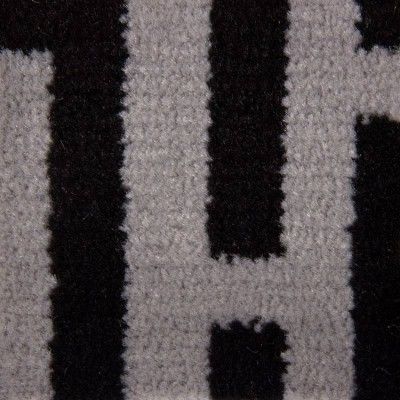
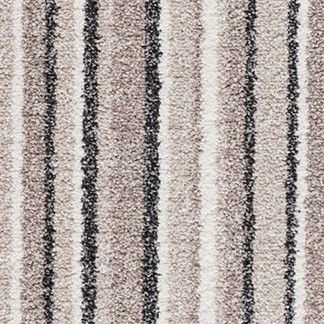
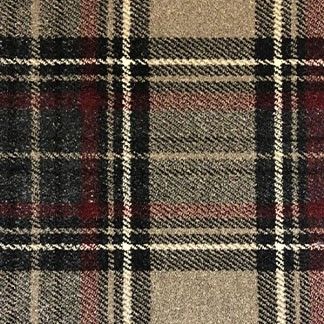
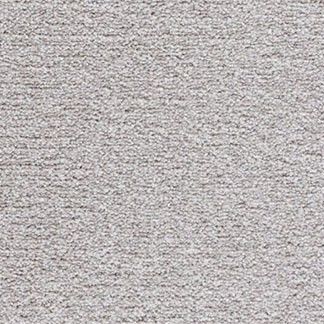











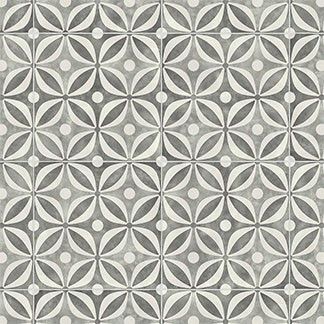
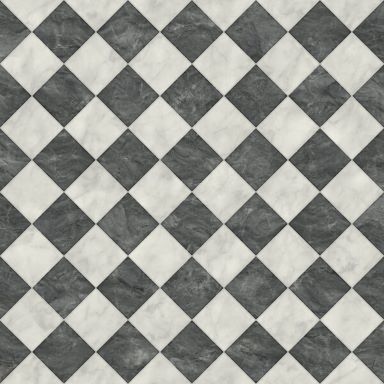
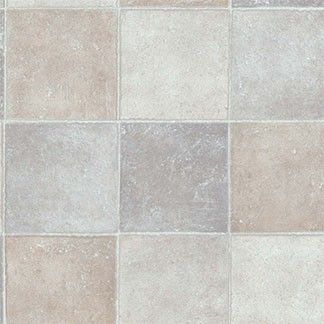
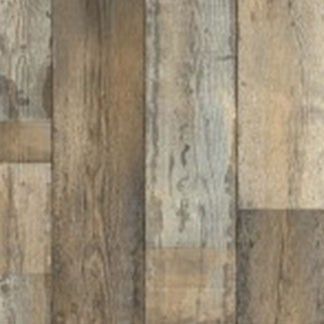









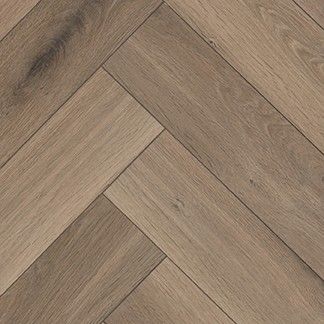
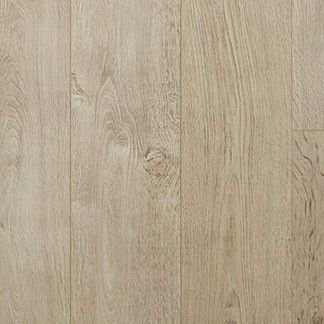
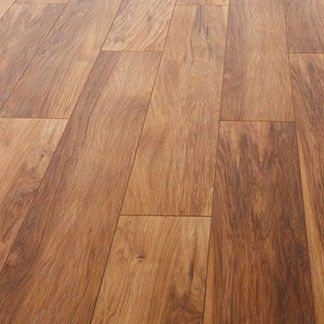
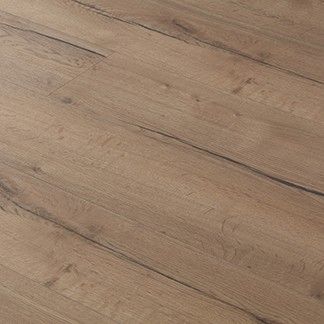
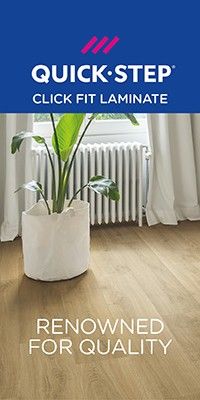








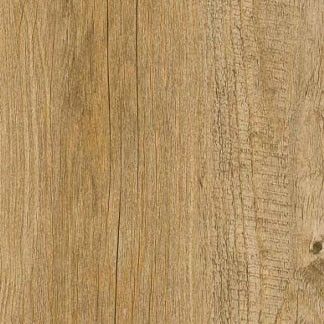
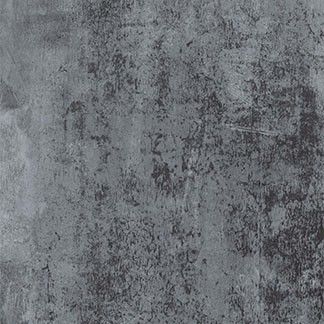
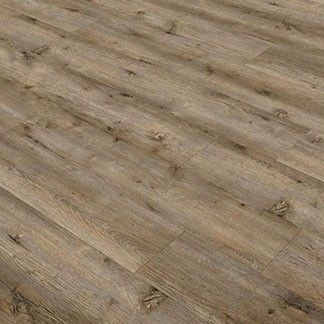
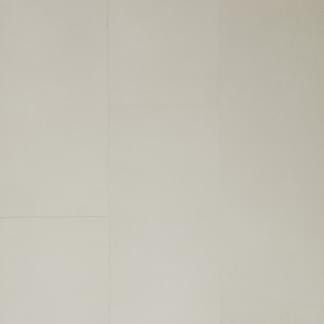
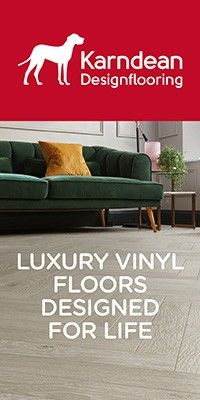



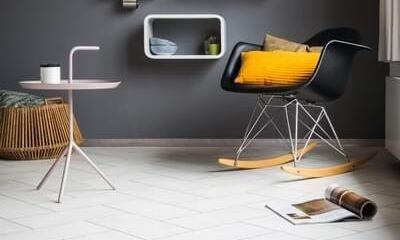
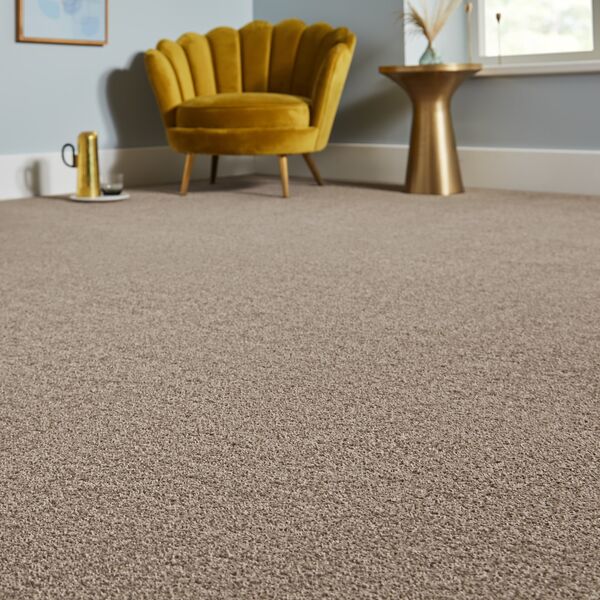
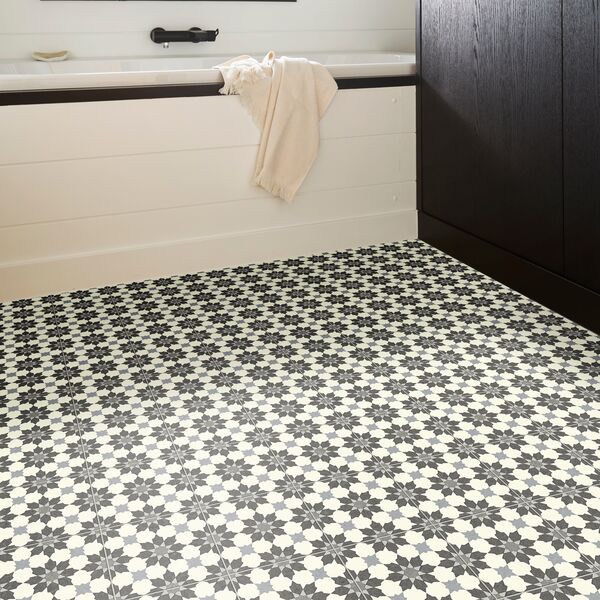
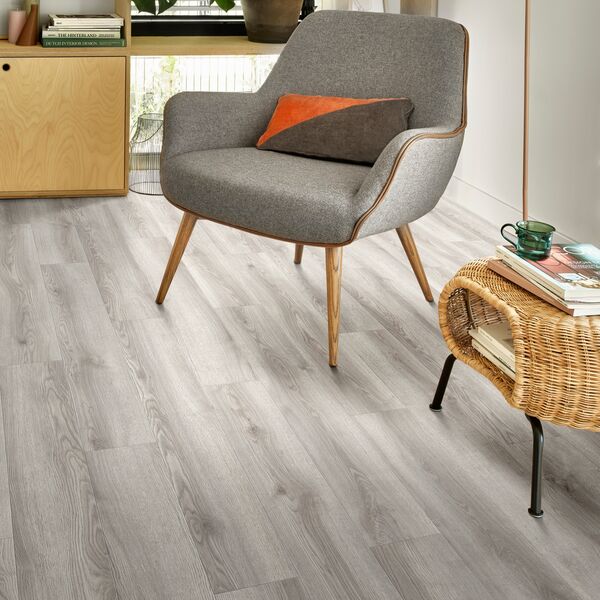
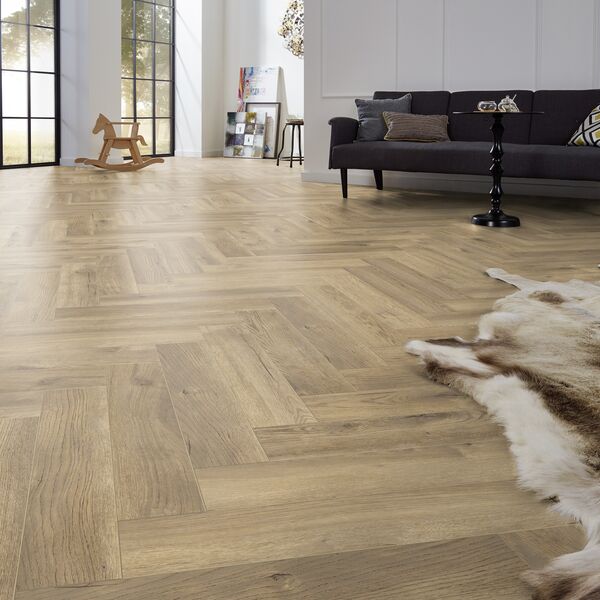
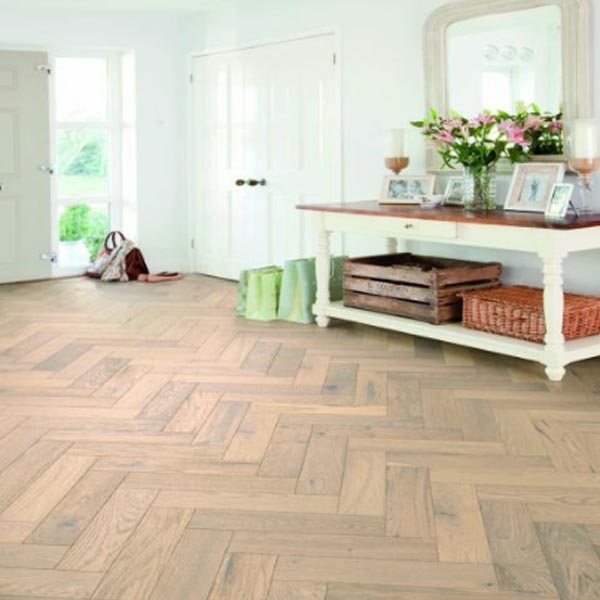

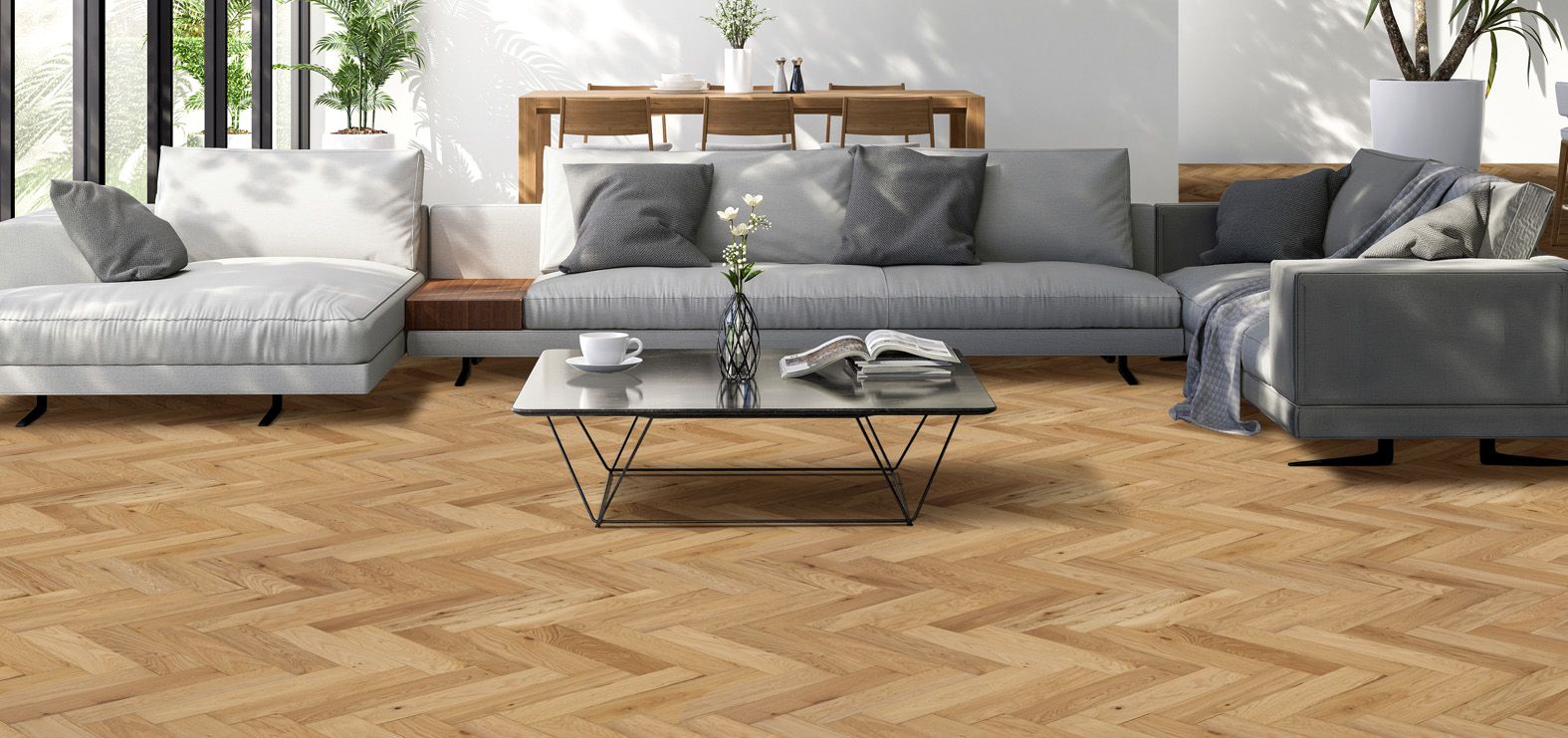
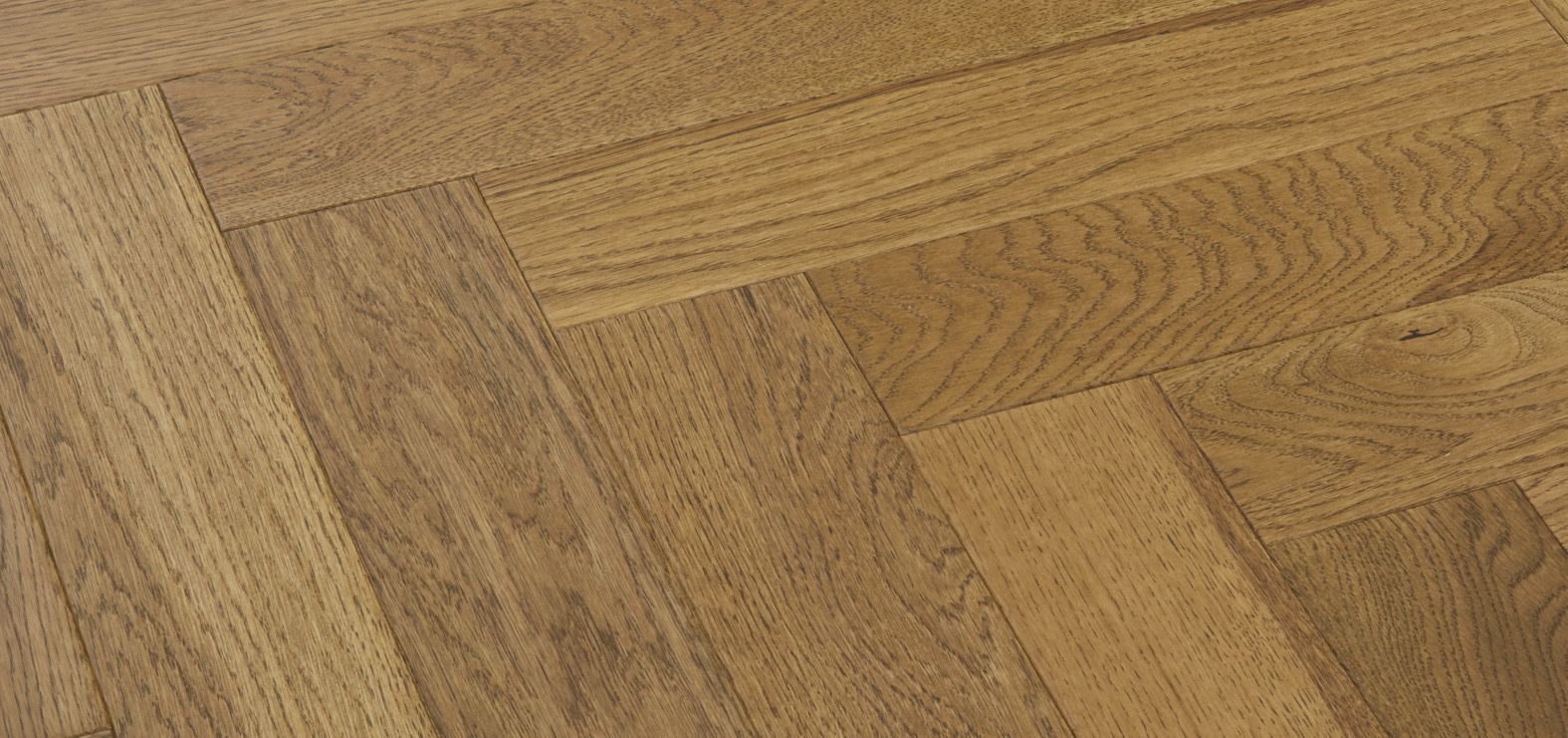
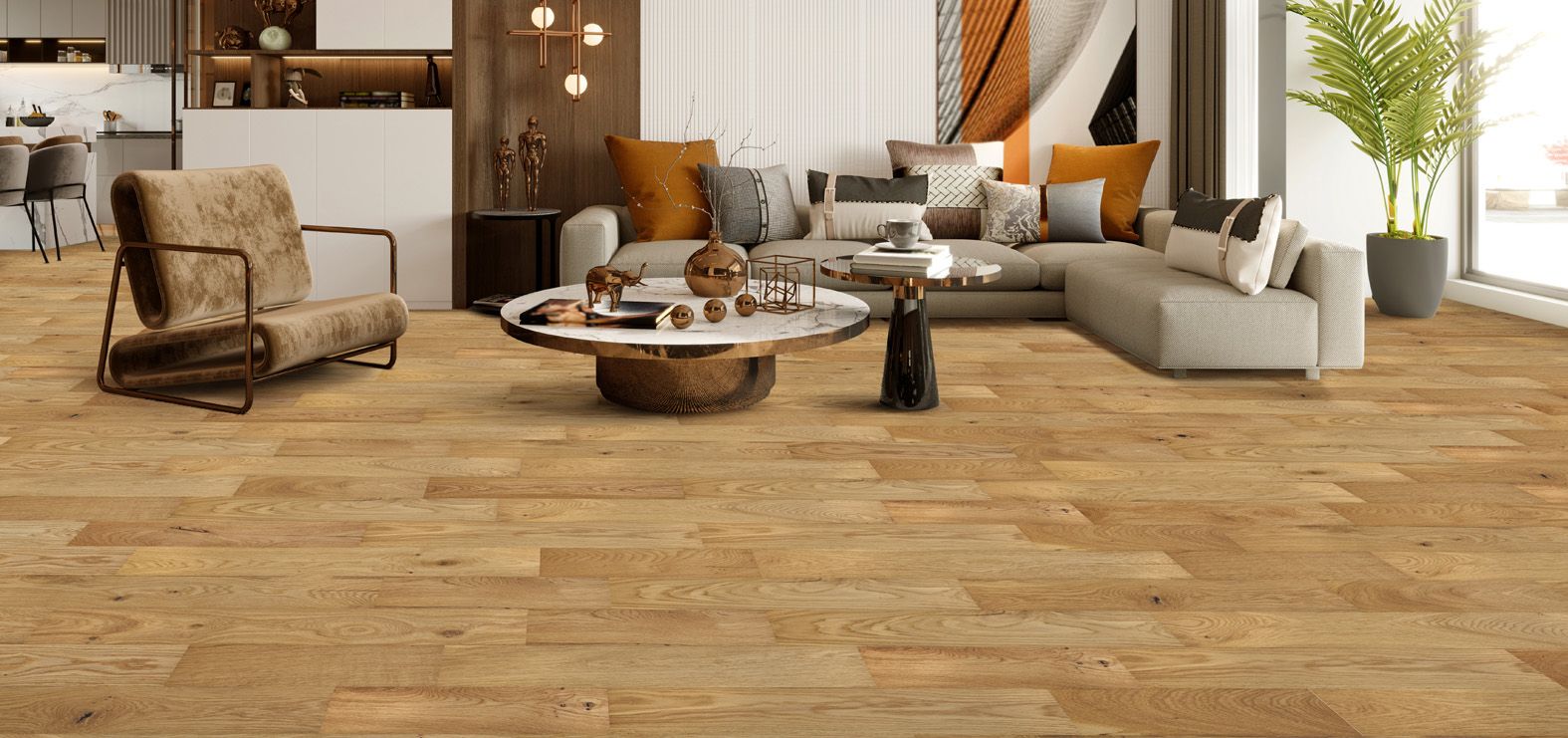







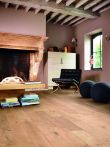


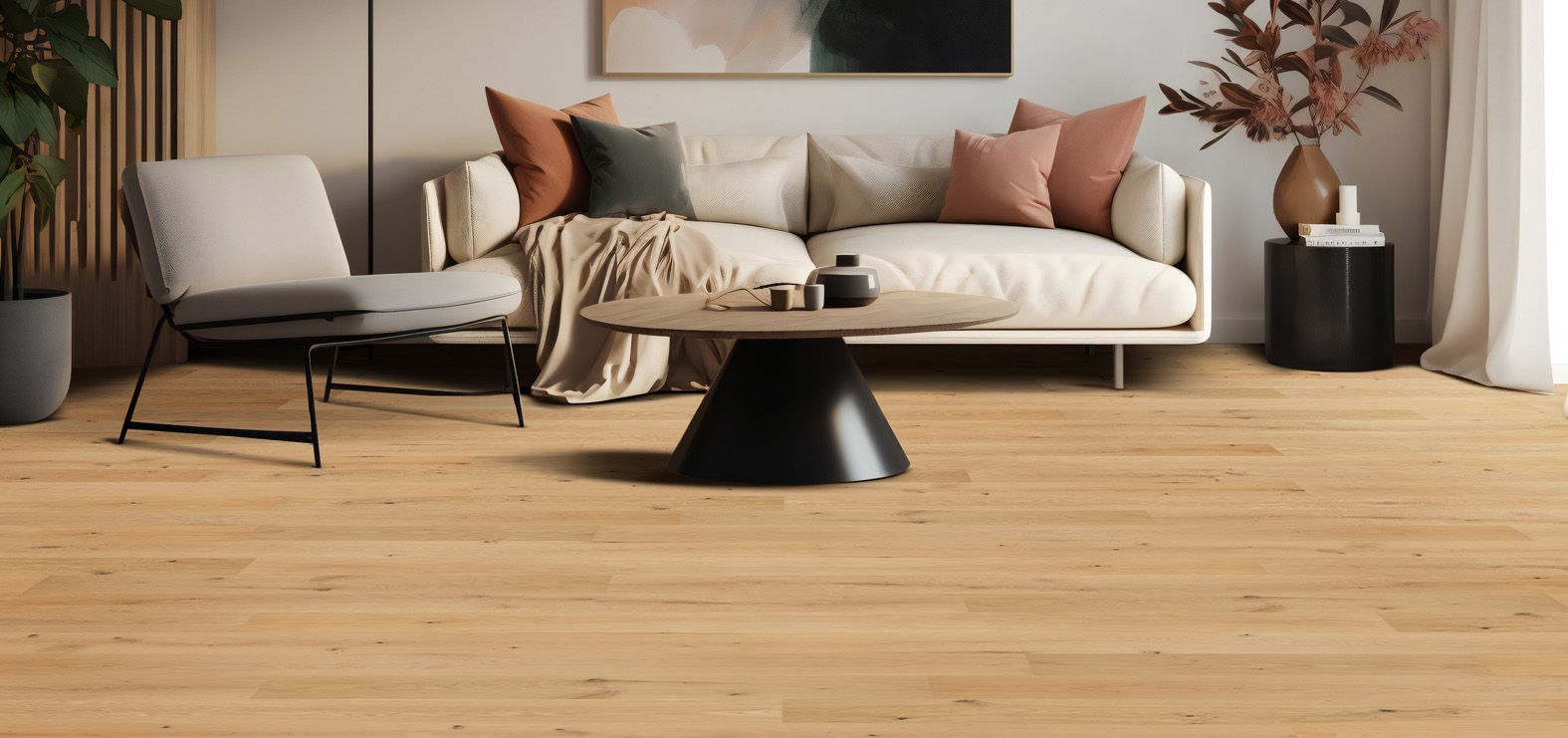

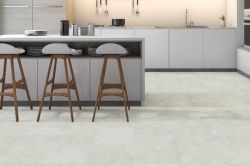
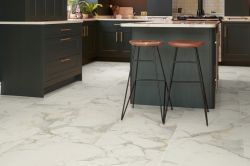
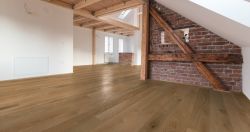
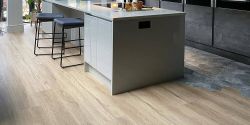
-250.jpg)
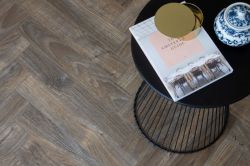
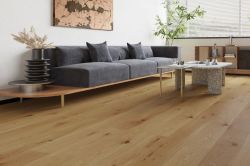
-250.jpg)
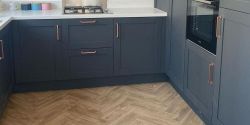
 copy-250.jpg)

 - Article Image (not header)-250.jpg)
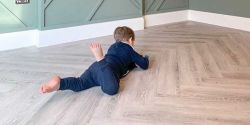

-250.jpg)
